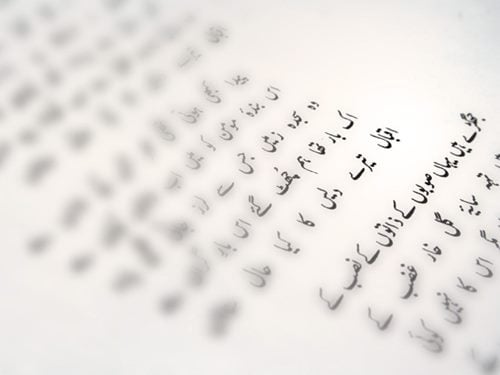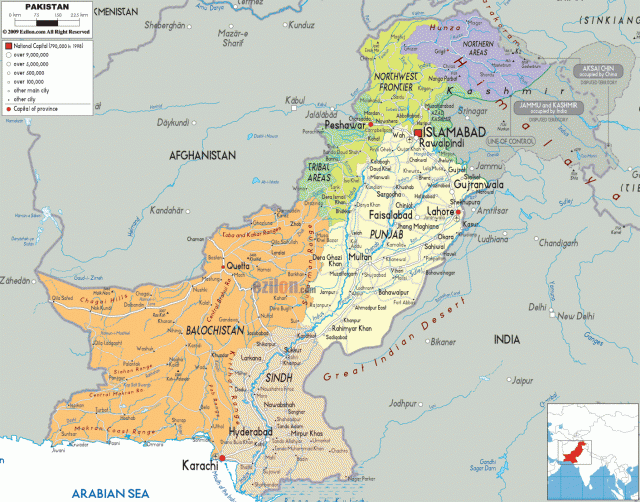In this article, you learned how to use sharp methods to process images in Node.js. First, you created an instance to read an image and used the metadata() method to extract the image metadata. You then used the resize() method to resize an image. Afterwards, you used the format() method to change the image type, and compress the image. Next, you proceeded to use various sharp methods to crop, grayscale, rotate, and blur an image. Finally, you used the composite() method to composite an image, and add text on an image.
In this tutorial, we reviewed how to use the sharp library to process images in Node.js. We used the grayscale(), tint(), rotate(), resize(), crop(), blur(), sharpen(), flip(), and flop() methods to alter the image's appearance, style, and shape. We extracted the image metadata using the metadata() method. We combined two images using the composite() method. We also used the composite()method to add text to the image with an SVG workaround. Lastly, we used the format() method to change the image type and compress the image.
Now we will do the fun part of the application after we upload the images files on the server. We will make use of the sharp library to resize and convert images from one format to another. If they have provided then we resize the image with that dimensions.
If they don't provide it inside the form then we will pass the default dimensions width and height of the image. We will get the dimensions of the image by image-size package. For resizing the image in Node.js and achieving High-performance Node.js image processing, the fastest module to resize JPEG, PNG, WebP, and TIFF images is Sharp. We have already installed the sharp.Now, create a file inside the root called Resize.jsand add the following code. First, you'll chain the resize() method from the sharp instance to resize the image, and save it in the project directory.
Second, you'll chain the format() method to the resized image to change its format from png to jpeg. Additionally, you will pass an option to the format() method to compress the image and save it to the directory. In this tutorial, you'll use sharp to read an image and extract its metadata, resize, change an image format, and compress an image. You will then crop, grayscale, rotate, and blur an image.
Finally, you will composite images, and add text on an image. By the end of this tutorial, you'll have a good understanding of how to process images in Node.js. Node.js has an ecosystem of libraries you can use to process images, such as sharp, jimp, and gm module. Sharp is a popular Node.js image processing library that supports various image file formats, such as JPEG, PNG, GIF, WebP, AVIF, SVG and TIFF. I am working on an image processing API in node and want to get buffer from an image file.
I am using sharp nodejs Sharp resized images become 0 bytes. In this quick example, let's see node js resize image before upload multer. You can understand a concept of node js compress image before upload. We will help you to give example of node.js image uploading with multer.
This article goes in detailed on node js multer sharp resize image. You will do the following things for nodejs sharp resize image example. Within the resizeImage() function, you use the toFormat() method of the sharp module to change the image format and compress it.
The first argument of the toFormat() method is a string containing the image format you want to convert your image to. The second argument is an optional object containing output options that enhance and compress the image. Digital image processing is a method of using a computer to analyze and manipulate images. The process involves reading an image, applying methods to alter or enhance the image, and then saving the processed image. It's common for applications that handle user-uploaded content to process images.
For example, if you're writing a web application that allows users to upload images, users may upload unnecessary large images. This can negatively impact the application load speed, and also waste your server space. The Image URL API is the heart of the imgix service. See the Pen Image format comparison 2 by Addy Osmani.Various tools exist for comparing the dissimilarity between different image formats (e.g., DSSIM, simulacra). Using these tools, you can approximate the comparable quality setting when evaluating, say, JPEG to WebP or WebP to AVIF. Below are the same images encoded at comparable quality, targeting JPEG's 70% quality.
The output is 323KB , 214KB (WebP@q75), and 117KB (AVIF@60) — sizes are a little larger than trusting the defaults, but the compression wins are still significant. Sharp is a very popular image processing library on the Node.js platform. It is actually packaged based on the libvips library written in C language , so high performance has become a big selling point of sharp. Sharp can easily implement common picture editing operations, such as cropping, format conversion, rotation transformation, filter addition, etc. Of course, there are more related articles on the Internet, sharp official documents are also more detailed, so this is not the focus of this article. The main purpose here is to record some of the solutions to the slightly more complicated image processing requirements that I encountered in the process of using sharp.
I hope that sharing it can be helpful to everyone. #In addition to query parameters, Parcel also supports using a configuration file to define options that apply to all of the images in your project. For example, you could re-encode all images at a certain quality setting to reduce file size, or define more advanced options for each output format. Now that you can resize an image, next you'll convert the resized image format from png to jpeg, compress the image, and save it in the working directory.
To do that, you will use toFormat() method, which you'll chain after the resize() method. After resizing the image, you chain the sharp module's toFile() method, which takes the image path as an argument. Passing sammy-resized.png as an argument will save the image file with that name in the working directory of your program.
Resizing is the process of altering an image dimension without cutting anything from it, which affects the image file size. In this section, you'll resize an image, change its image type, and compress the image. Image compression is the process of reducing an image file size without losing quality. Sharp makes it easy to implement common image editing operations such as cropping, format conversion, rotation transformation, filter addition, and more.
Of course, there are more related articles on the network, sharpOfficial documentAlso more detailed, so this is not the focus of this article. The main reason here is to record some of the more complicated image processing requirements I encountered during the use of sharp. Like AVIF, Squoosh can also convert files to WebP online, as shown in the previous section.
XnConvert is a utility that you can install on the desktop to convert different image formats, including WebP. We have mentioned WebP a few times, but let's briefly cover its history. Google created the WebP format in 2011 as an image format that would help to make the web faster. Over the years, it has been accepted and adopted widely because of its ability to compress images to lower file sizes compared to JPEG and PNG. WebP offers both lossless and lossy compression at an acceptable visual quality and supports alpha-channel transparency and animation. Image upload is the basic requirement of any application.
So this example will guide you step by step on how to resize image before upload using multer in node js. And you can understand a concept of node js compress image before upload. Resize image before upload using multer, sharp with node js and express js. In this node js tutorial, you will learn how to resize image before upload using multer, sharp with node js and express js. Sharp is a high-performance image processing module for Node.js.
This module assists with UGC management by offering an easy solution for reading, enhancing, and saving image files. Sharp compresses images faster than most other Node.js modules, like ImageMagick, Jimp, or Squoosh, and produces high-quality results. At the time of writing, sharp doesn't have a native way of adding text to an image. To add text, first, you'll write code to draw text using Scalable Vector Graphics. Once you've created the SVG image, you'll write code to composite the image with the sammy.png image using the composite method. You will get no output, but you should see a new image file created with the name sammy-resized.png in the project directory.
See how the background resizes, but at a certain width/height ratio it stops resizing so that the image continues to fill the window? The need for pasting text is actually similar to adding a watermark. The only difference is that the added watermark image is replaced with text, and we may need to make some adjustments to the size and font of the text. The idea is also easier to think of, just convert the text into the form of a picture. Here we use the text-to-svglibrary, the role is to convert text into svg.
Using the characteristics of svg, we can easily set the font size, color, etc. of the text. Then call Buffer.fromto convert svg sharp to buffer data that can be used. The last step is the same as adding the watermark above. Questions about sharp a Node.js image processing library to resize crop and optimize JPEG PNG WebP and TIFF images.
In this tutorial, we learned how to set up a node.js server-application from scratch and created a very basic image-resizer using the sharp-library. Image files can get big, so you might want to think about reducing image sizes when you let users upload photos on your website. Here's how you can use npm packages like sharp and multer to handle files and images in Node.js. To carry out the processing task, we define the convertTograyscale() function.
Then, we chain the sharp module's grayscale() method to the sharp instance to alter the image's appearance. We save the altered image in the processed_images folder using the toFile() method. The cropImage() function converts the cropped image to grayscale by chaining the sharp module's grayscale() method to the sharp instance. It then saves the image in the project directory as sammy-cropped-grayscale.png. You will receive no output, but an image file sammy-resized-compressed.jpeg is saved in your project directory.
The resizeImage() function chains the sharp module's resize() method to the sharp instance. In the object, you set the image dimensions you want using the width and height property. Setting the width to 150 and the height to 97 will make the image 150px wide, and 97px tall.
The need to paste text is actually similar to adding a watermark. The only difference is that the added watermark image is replaced with text, and we may need to make some adjustments to the size, font, etc. of the text. The idea is also easier to think of, the text can be converted into a picture form. We used it here.text-to-svg Library, the role is to convert text to svg. Using the features of svg we can easily set the font size, color, etc. of the text. Then callBuffer.from Convert svg to buffer data that sharp can use.
The last step is to add the same steps as the watermark above. Eleventy will skip processing files that are unchanged and already exist in the output directory. This requires the built-in hashing algorithm and is not yet supported with custom filenames. Libaom is the open-source encoder and decoder maintained by AOMedia, the creators of AVIF. The library is continuously updated with new optimizations that aim to reduce the cost of encoding AVIF, especially for frequently loaded or high-priority images.
Libavif is an open-source muxer and parser for AVIF used in Chrome for decoding AVIF images. You can use libavif with libaom to create AVIF files from original uncompressed images or transcode them from other formats. There is also Libheif, a popular AVIF/HEIF encoder/decoder and Cavif. Thanks to Ben Morss, libgd supports AVIF and is also coming to PHP in November. Now the comes the most important part of the application we need to first of all upload the images to the uploads folder before we can process them. So for this we will be using a famous library of node called multer to do this task.
Copy paste this block of code to upload files inside node. In this tutorial, you have learned how to resize or compress image before upload in node js express framework. High performance Node.js image processing, the fastest module to resize JPEG, PNG, WebP, AVIF and TIFF images. ● These variables are used by passing them into the resize function,and also the content type or the file extension of the desired output is entered along with it. A new transformation using the imported 'Sharp' module is created.
Sharp is a modern package for image manipulation, that is native to JavaScript. Instead of wrapping around a command-line tool, you have a nice JavaScript API to deal with. Among its many methods is the ability to read image metadata, and even to change the metadata. The documentation site gives a sense of what this package can do.
Namely, it is able to read a huge long list of metadata items from image files, where the supported tags are derived from a large library of sample images. In several cases the documentation refers you to the exiftool documentation as well. We can store extra data inside images, such as geolocation coordinates, text strings, and more.
While there are fancy GUI applications for dealing with this data, we sometimes need to process it in our Node.js programs. For example, a static website generator platform, like AkashaCMS, might use metadata stored in images such as to automatically provide captions, or tooltip text. What we'll do in this tutorial is explore reading metadata in Node.js. Low level utility to perform build-time image transformations for both vector and raster images. Output multiple sizes, save multiple formats, cache remote images locally. Images can be up to ten times smaller than JPEGs of similar visual quality.

















































